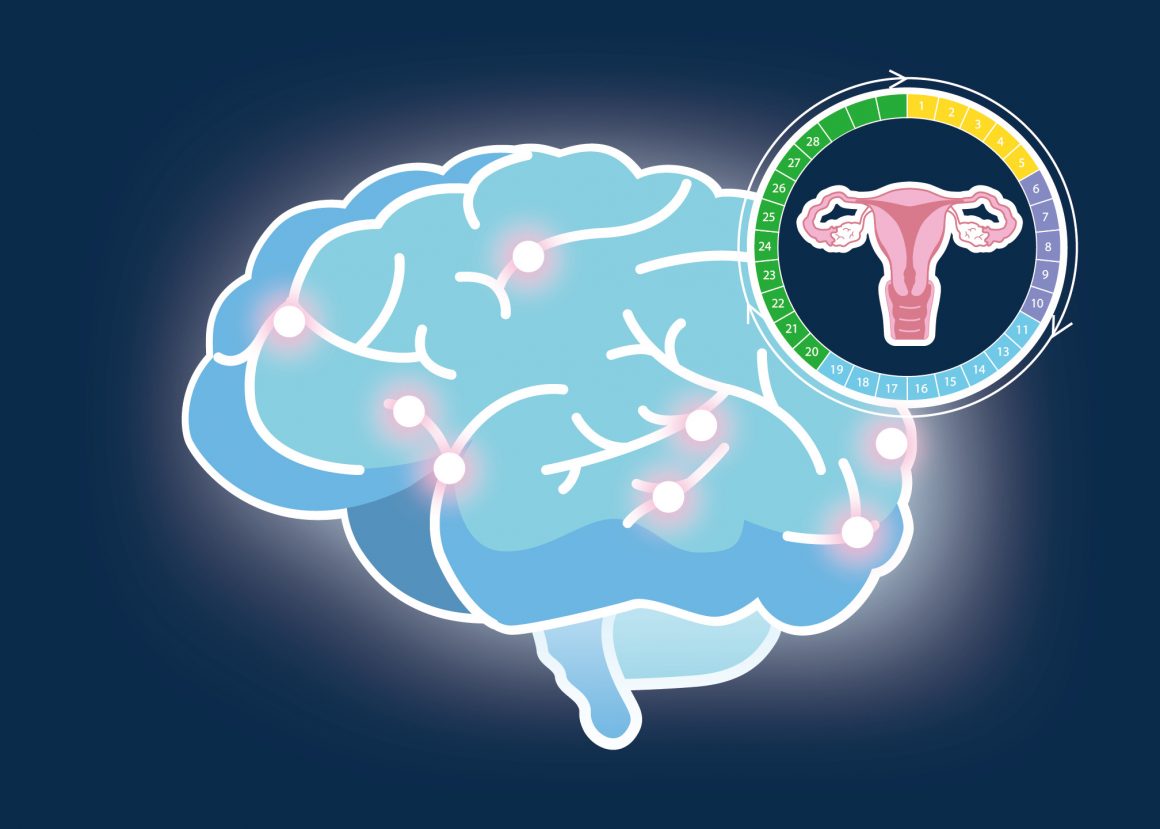
Brain microstructural changes: Another menstrual cycle symptom
By Leonie O’Sullivan, December 1 2023—
Those of us with uteruses will endure about 450 menstrual cycles in our lifetimes, experiencing symptoms like cramps, fatigue, bloating or breakouts. In addition, the structure of our brains and the concentrations of menstrual cycle hormones are changing in concert. Researchers Elizabeth Rizor and Viktoriya Babenko from the University of California, Santa Barbara (UCSB) have shared their findings on bioRxiv. The science around hormonal-driven brain changes is not novel, but recent advancements in the field of neuroimaging have allowed researchers to take a closer look at what’s going on.
This study from UCSB recruited 30 young, healthy and naturally cycling females. Participants tracked their cycles by using at-home ovulation tests and by recording the duration of their menses. With this information, the researchers could approximate the dates of three stages of their menstrual cycles — menses, ovulation and the mid-luteal phase (when the womb lining thickens in preparation for receiving a fertilized egg.)
During each of these stages, the participants underwent an MRI scan to take pictures of their brains and provided blood samples to quantify their levels of the four menstruation cycle hormones, 17-estradiol (the primary form of estrogen), progesterone, luteinizing hormone (LH) and follicle-stimulating hormone (FSH). Estrogen and progesterone play an important role in thickening the womb lining and are produced in the ovaries. LH and FSH trigger ovulation and are produced in the pituitary gland at the base of our brains.
The study’s main aim was to determine if the fluctuation of these hormones correlated with changes in white matter (WM) microstructure. They also wanted to investigate if the hormonal fluctuations resulted in changes to grey matter (GM) cortical thickness or brain volume. GM cortical thickness is the width of GM in the brain’s outer layer. GM contains most of the brain’s neurons, while WM plays a key role in communication by connecting GM.
With the help of machine learning, they discovered that fluctuations of the hormones listed above resulted in widespread WM microstructure shape and size alterations. Progesterone and FSH correlated with GM cortical thickness but only at specific brain regions. Brain tissue volume and cerebrospinal fluid volume were linked to progesterone levels. None of the hormones strongly correlated with total brain volume.
The authors noted that these findings might affect behaviour and cognition. Progesterone is known to enhance memory in rodents and reduce anxiety but negatively affects mood in women. Altogether, it seems like progesterone affects both the limbic system (a part of our brain involved in behaviour and emotion) and structural and functional networks across the entire brain. Fluctuating levels of FSH are associated with long-term cognitive outcomes, but it is unknown if short-term fluctuations (i.e., one menstrual cycle) could affect cognition.
Lastly, changes in GM volume in the amygdala, our emotion processing centre, have been linked to heightened stress sensitivity. It may be worthwhile tracking your menstrual cycle to better prepare for your unique needs at different times of the month.
